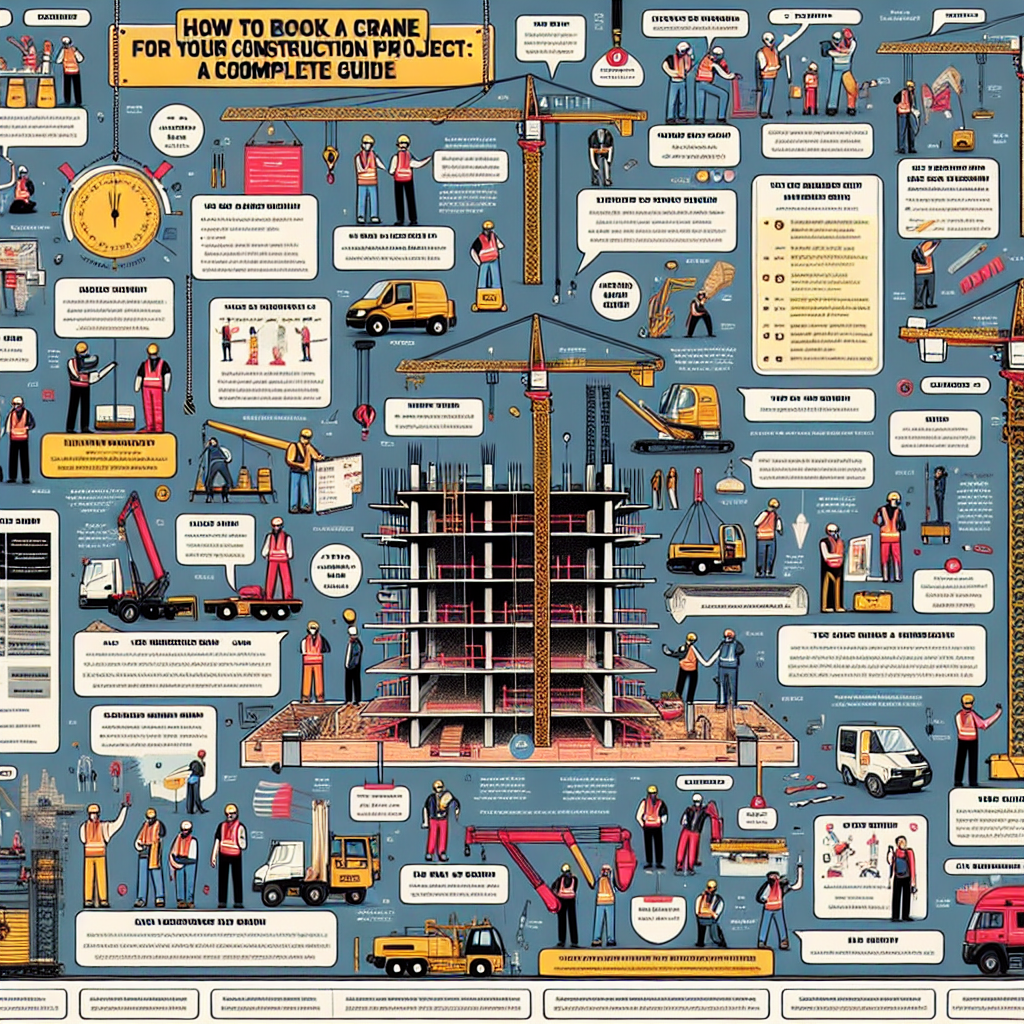How to Book a Crane for Your Construction Project: A Step-by-Step Guide
Whether you’re managing a large commercial build or a residential renovation, cranes are often essential for lifting and transporting heavy materials. This comprehensive guide will walk you through everything you need to know about how to book a crane for your construction project, highlighting crucial steps, important considerations, and top industry tips to ensure your project’s success.
Why Crane Rental is Essential in Modern Construction
Cranes are indispensable on most modern construction sites, allowing for the safe and efficient movement of heavy materials such as steel beams, concrete blocks, and prefabricated structures. Hiring a crane provides access to specialized equipment without the need for large capital investment, while also ensuring the highest standards of safety and efficiency.
- Efficient Material Handling: Cranes significantly speed up the process of lifting and positioning materials.
- Cost-Effective: Renting a crane is usually more economical than purchasing one outright, especially for short-term or one-off projects.
- Access to Expertise: Most crane hire companies provide skilled operators and support staff.
Step 1: Assess Your Project Requirements
Before you book a crane, it’s critical to fully understand your project’s specific needs. Consider the following questions:
- What is the maximum weight you need to lift? Knowing the exact load helps determine the right type and capacity of crane.
- What is the height and reach required? Measure the vertical and horizontal distances to ensure the crane can safely operate on-site.
- Are there site access limitations? Urban locations or confined spaces might require a compact or mobile crane.
LSI Keywords: crane hire requirements, construction site lifting needs, crane load capacity, project assessment for lifting equipment
Step 2: Choose the Right Type of Crane
There are several types of cranes available for construction projects. Selecting the appropriate type is crucial for safety and efficiency:
| Crane Type | Best For | Typical Use Case |
|---|---|---|
| Mobile Crane | Versatility, easy relocation | Urban construction, quick projects |
| Tower Crane | High-rise buildings | Skyscrapers, large-scale sites |
| Rough Terrain Crane | Unpaved or uneven sites | Remote or rugged locations |
| Crawler Crane | Heavy lifting, stability | Major infrastructure projects |
LSI Keywords: types of cranes, mobile crane rental, tower crane for construction, crawler crane selection
Step 3: Find a Reputable Crane Rental Company
Choosing the right crane hire provider is essential. Here’s how to make a smart choice:
- Experience & Reputation: Look for companies with proven track records in your area.
- Safety Standards: Ensure they follow all local safety regulations and provide certified operators.
- Equipment Range: The best companies offer a variety of cranes to suit different project needs.
- Customer Support: Reliable support before, during, and after the rental period is invaluable.
LSI Keywords: crane hire company, reputable crane rental, certified crane operators, crane hire safety
Step 4: Request a Detailed Quote and Confirm Availability
Contact your shortlisted crane hire providers to request detailed quotes. Be ready to provide the following information:
- Project location
- Crane type and capacity needed
- Duration of hire
- Site access details
- Lift plan or technical drawings if available
Ask about:
- Operator fees
- Insurance coverage
- Transport and setup costs
- Any additional charges (e.g., overtime, fuel surcharges)
Step 5: Prepare the Construction Site for Crane Arrival
Proper site preparation is crucial for a safe and efficient crane operation:
- Clear the area: Remove obstacles and mark out the crane’s operating zone.
- Check ground conditions: Ensure the ground is stable and level to support the crane’s weight.
- Arrange permits: Some areas may require road closures or special permits for crane operations.
- Communicate with your team: Everyone on site should be aware of the crane’s arrival and planned lifts.
LSI Keywords: site preparation for crane, crane safety checks, lifting operation permits, construction site coordination
Step 6: Finalize the Booking and Review Safety Procedures
Once you have selected your crane hire provider and confirmed all details, finalize the booking in writing. Make sure to:
- Double-check the rental agreement
- Review insurance documents
- Confirm operator qualifications
- Arrange a pre-lift meeting to discuss safety procedures
Step 7: Manage the Crane Hire Process Onsite
On the day of the lift, ensure the following:
- The crane arrives as scheduled and is set up according to the plan
- All personnel are briefed on the day’s tasks and safety protocols
- The operator follows the agreed lift plan and communicates with ground staff
- Any unforeseen issues are addressed immediately with the rental company
Common Mistakes to Avoid When Booking a Crane
- Underestimating load weights or reach requirements
- Neglecting to check site access and ground conditions
- Not verifying the crane operator’s qualifications
- Failing to communicate with local authorities about road closures or permits
- Skipping the pre-lift safety briefing
Frequently Asked Questions
- How far in advance should I book a crane for my project?
- It’s best to book at least 1-2 weeks in advance, especially during busy construction seasons. For larger or specialized cranes, consider booking even earlier.
- What information do I need to provide to the crane rental company?
- Be prepared to give project details, load weights, site conditions, required crane type, and the duration of the hire.
- Are crane operators included in the rental?
- Most reputable companies provide certified operators as part of the rental package, but always confirm this before booking.
Conclusion
Booking a crane for your construction project doesn’t have to be complicated. By following this step-by-step guide, you can ensure a smooth process from start to finish, minimize risks, and keep your project on track. Understanding your project’s needs, choosing the right equipment, working with reputable vendors, and prioritizing safety will guarantee successful crane operations every time.
Ready to elevate your next construction project? Use this guide as your checklist to book a crane with confidence and efficiency!
